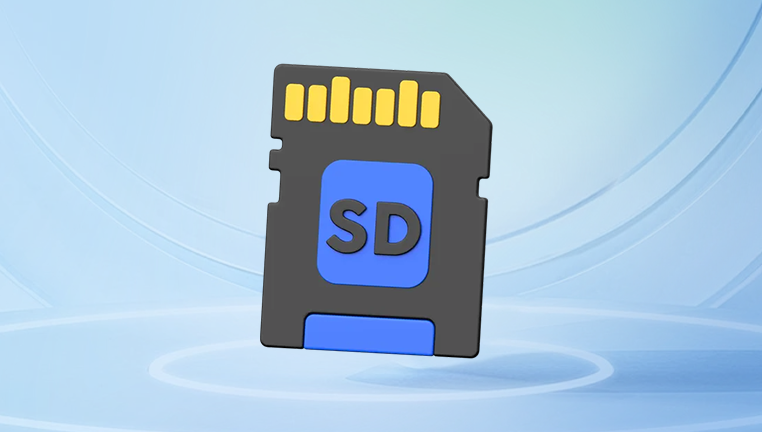Losing a Google Slides presentation whether due to accidental deletion, a mistaken overwrite, or even a sharing error can be devastating. Imagine working on a crucial client pitch, a school presentation, or an investor deck, only to find your work vanished. While it might feel like all is lost, the good news is that Google offers powerful built-in tools for data recovery that many users overlook.
Chapter 1: Google Slides and Deletion Behavior
1.1 What Is Google Slides?
Google Slides is a cloud-based presentation software developed by Google, part of the Google Workspace suite. It stores files in Google Drive, which means that any deletions or edits are saved in the cloud, and recovery depends on how Google handles those actions.

1.2 How Deletion Works in Google Slides
When a user deletes a Google Slides file:
It moves to the Trash in Google Drive.
Files remain in Trash for 30 days before permanent deletion.
If you own the file, you can recover it.
If someone shared the file with you, you may no longer have access once it’s deleted.
Chapter 2: Recover from Trash in Google Drive
The most straightforward way to recover a deleted Slides presentation is from the Google Drive Trash folder.
2.1 Accessing Trash
Go to drive.google.com.
On the left-hand menu, click “Trash.”
Locate your deleted Google Slides file (check date and name).
Right-click on the file and select “Restore.”
This will return the file to its original location in Google Drive.
2.2 What If the File Isn’t in Trash?
If more than 30 days have passed since deletion, or if Trash has been manually emptied, the file is considered permanently deleted—but there are still recovery options available.
Chapter 3: Recovering Google Slides via Version History
Even if your file wasn’t deleted, you might have overwritten or changed content. In this case, Google Slides' Version History is your best friend.
3.1 Accessing Version History
Open the file in Google Slides.
Go to File > Version History > See version history.
Browse through versions by date/time.
Click a version to preview it.
Click “Restore this version” if you want to revert.
3.2 Benefits of Version History
Unlimited save points: Tracks every significant edit.
Time-stamped: Great for collaborative work.
Recover portions: You can copy/paste elements from an older version into the current one.
Chapter 4: Recover Shared Google Slides Presentations
If someone shared a Slides file with you and then deleted it, you might lose access, but you can try the following:
4.1 Check “Shared with Me”
Go to Google Drive.
Click “Shared with Me” in the sidebar.
Search using keywords, file name, or owner’s name.
4.2 Restore from Email Link
If you’ve previously accessed the presentation via an email or calendar invite:
Look for the email link.
If the owner hasn’t removed your access, you can still view or copy it.
If access is denied, request the owner to restore the file or change permissions.
4.3 Ask the Owner to Recover
If the file is owned by someone else, only they can restore it from their Trash within 30 days. Ask them to:
Check their Google Drive Trash.
Right-click the file > Restore.
Chapter 5: Recovery from Google Drive Activity and Search
If you can’t find the file in Trash or Shared folders, try using Google Drive’s activity panel and search functions.
5.1 Use Google Drive Search
In Google Drive:
Type keywords from your file title or content.
Use filters like:
Type: Google Slides
Owner: Me or someone else
Date modified
Sometimes renamed or relocated files are mistaken for deleted ones.
5.2 Check the Activity Panel
Click the “i” icon in the top-right of Google Drive.
The activity pane will show recent changes, including deletion, renaming, or movement.
This is useful if the file was accidentally moved to another folder.
Chapter 6: Use Google Vault or Admin Console (For Workspace Users)
If you're using Google Workspace (formerly G Suite)—typically for schools or businesses—your administrator may be able to restore deleted files.
6.1 Admin Recovery via Admin Console
Google Workspace admins can:
Restore deleted files up to 25 days after deletion from Trash.
Access via admin.google.com > Users > Restore Data.
6.2 Google Vault
Organizations using Google Vault may have data retention policies that allow:
Recovery of deleted emails and files.
Search through Vault interface by user, date, and file type.
Contact your IT administrator to see if recovery through Vault is possible.
Chapter 7: Recovery on Mobile Devices
Google Drive and Google Slides apps on mobile (Android/iOS) also support file recovery.
7.1 Trash on Mobile
Open the Google Drive app.
Tap the menu icon > Trash.
Locate the Slides file.
Tap the three-dot menu > Restore.
7.2 Check Google Photos
If your Slides file had embedded images, they might also be backed up to Google Photos—useful if you're trying to reconstruct a presentation.
Chapter 8: Recovery from Offline Access or Backup
8.1 Recover from Offline Backups
If you enabled offline access for Google Drive:
Navigate to the offline folder (Google Drive sync folder).
Search for autosaved or cached versions.
Use local file history (on Windows/Mac) to retrieve prior versions.
8.2 Check Downloaded Backups
If you previously downloaded your Slides as PPTX, PDF, or ODP:
Search your Downloads or Documents folders.
These copies can be reuploaded and edited in Google Slides.
Chapter 9: Using Google Takeout for File Recovery
Google Takeout lets you export all your data, including Slides, even if they don’t show in Drive.
9.1 How to Use Google Takeout
Go to takeout.google.com.
Deselect all > Select only Drive.
Proceed to create an archive.
Download and extract the files—your Slides will be in .gslides or .pptx format.
This works if:
You haven’t deleted the file beyond 30-day Trash limit.
Your Google account still stores metadata for the file.
Chapter 10: Prevention Tips – Never Lose Slides Again
10.1 Organize with Folders
Keep presentations organized by topic, date, or project to prevent accidental deletion.
10.2 Use Google Drive Shortcuts
Instead of moving files, use shortcuts to access them in multiple locations.
10.3 Enable Offline Mode
Allows you to work and recover even without internet.
Go to Google Drive settings > Enable offline access.
10.4 Backup to Other Platforms
Download critical presentations as .pptx or PDF to your local machine.
Sync Google Drive with Dropbox, OneDrive, or an external hard drive.
Chapter 11: What to Do If All Else Fails
If none of the above works, you still have a few last-resort options:
11.1 Contact Google Support
For Google Workspace users:
Contact your domain admin to submit a support request to Google.
For personal users:
Use the Google Drive Help Center or contact form.
Google may restore lost data within 25 days if the loss resulted from a known error or system issue.
11.2 Recreate the Presentation Using Versioned Docs or Notes
Check if you drafted slides in Google Docs first.
Review emails, messages, or screenshots for content you can rebuild.




